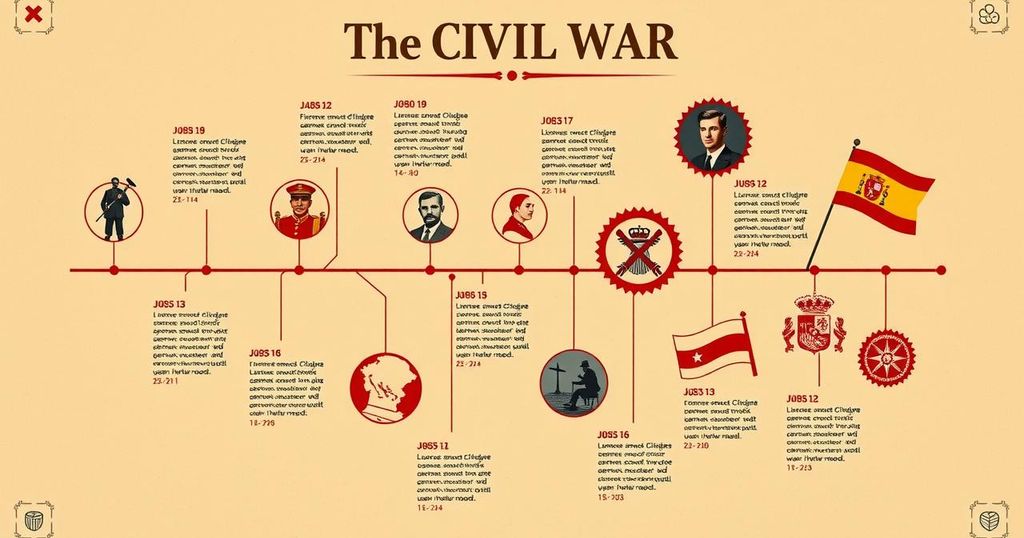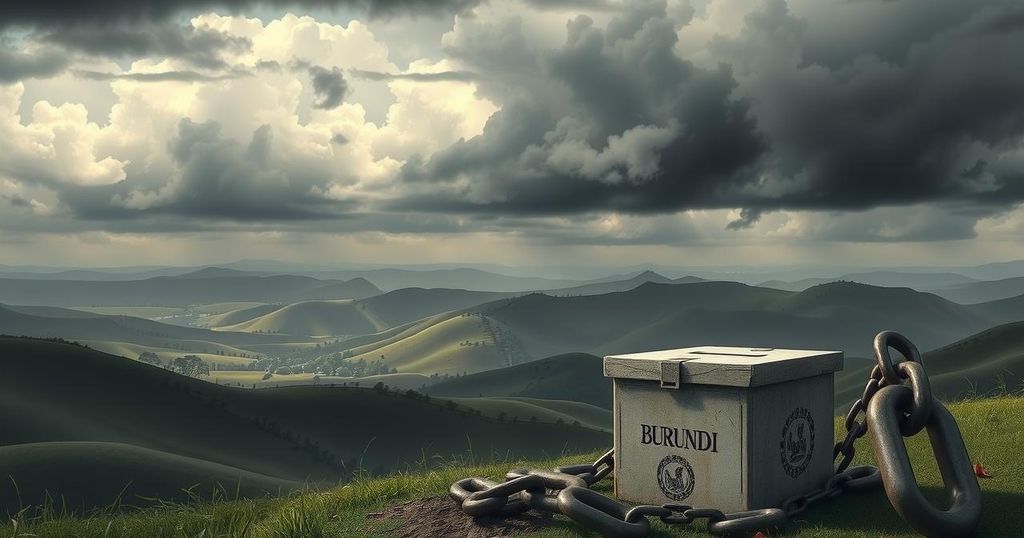Global news
Politics
ABD EL - KRIM, ADWA, AFRICA, ALFONSO XIII, AN, ANNUAL, ANWAL, CIVIL WAR, CRISIS, DEMOCRACY, ETHIOPIA, EUROPE, FA, FALANGE ESPAÑOLA, GUATEMALA, JOSÉ ANTONIO PRIMO DE RIVERA, MANUEL AZANA, MILITARY, MOROCCO, NORTH AMERICA, POLITICAL VIOLENCE, POPULAR FRONT, SAN SEBASTIAN, SAN SEBASTIÁN, SECURITY, SPAIN
Jamal Walker
0 Comments
Timeline of the Spanish Civil War
The Spanish Civil War, initiated by a military coup in 1936, transformed into a brutal proxy war lasting until 1939, resulting in an estimated million deaths. Key events include the rise of Franco’s Nationalists, international involvement from fascist powers, and the eventual surrender of Republican forces, leading to a longstanding dictatorship under Franco.
The Spanish Civil War, a conflict that began with a failed military coup in July 1936, spiraled into a devastating proxy war by the time it ended in 1939. The events leading up to and during this turbulent time highlight the depth of political divisions in Spain and the wider implications for Europe. The war claimed numerous lives, with estimates of casualties reaching upwards of a million.
On May 17, 1902, Alfonso XIII ascended the Spanish throne at just 16 years old, a period he marked with significant royal intervention in politics. This meddling created a chaotic political landscape, featuring the rise and fall of 33 different governments between 1902 and 1923 before a coup by General Miguel Primo de Rivera in 1923 established a dictatorship.
By January 1930, the global depression had hit Spain hard. King Alfonso forced Primo de Rivera to resign, highlighting the monarchy’s tarnished image synonymous with the dictatorship’s excesses. A coalition of former liberal monarchists and Republicans began gathering to orchestrate a plan to depose Alfonso, culminating in municipal elections on April 12, 1931, where Republican and Socialist candidates claimed victory, leading to Alfonso’s swift exile.
Fast forward to October 29, 1933, when José Antonio Primo de Rivera established the Falange Española, a far-right nationalist group aspiring to overthrow the Republicans. This new movement initially struggled to gain traction, dependent on financial support from Mussolini’s Italy.
February 16, 1936 marked a turning point as the Popular Front, a left-wing coalition, secured a majority in parliament. This prompted widespread unrest, including over 113 general strikes and violence against churches and media outlets. Right-wing military leaders soon began plotting a coup, which launched into action after the assassination of José Calvo Sotelo on July 17, 1936, leading to Francisco Franco’s manifesto declaring rebellion.
The International Brigades arrived in Spain on October 14, 1936, bringing nearly 60,000 foreign volunteers to aid the Republicans. Meanwhile, Franco’s Nationalist forces received backing from fascist Italy and Nazi Germany despite a nonintervention agreement. This international involvement soon painted the conflict as a struggle between fascism and communism.
By April 26, 1937, Nationalist forces bombed the city of Guernica, with the Luftwaffe’s Condor Legion causing widespread destruction and civilian casualties. This tragic event was immortalized in Pablo Picasso’s renowned painting, capturing the horror of war. Not long after, Bilbao fell on June 19, 1937, but the battle for major cities like Barcelona and Madrid continued.
As the war drew on, the Republicans faced dire circumstances, culminating in the decisive Battle of the Ebro. By late November 1938, the Republican hope of reclaiming lost ground vanished, leading to the fall of Barcelona by February 1939. The refugee exodus into France intensified, and a mere two months later, on March 28, 1939, Nationalist troops entered Madrid without resistance. The city’s defenders had fled, leaving behind devastation and starvation.
The Spanish Civil War thus concluded after two years and 254 days, with many tragedies affecting the civilian population. Ultimately, what remained of Republican Spain surrendered, and Francisco Franco’s regime began, leading to decades of dictatorship until his death in 1975.
The Spanish Civil War serves as a stark reminder of the devastating consequences of political strife fueled by deep societal divisions. From the early days of King Alfonso XIII’s interventions to the rise of Franco’s Nationalist regime, the war showcased not only national turmoil but also broader ideological battles that resonated across Europe. In the end, as many as a million lives were lost, reshaping Spain’s future and leaving an indelible mark on global history.
Original Source: www.britannica.com




Post Comment